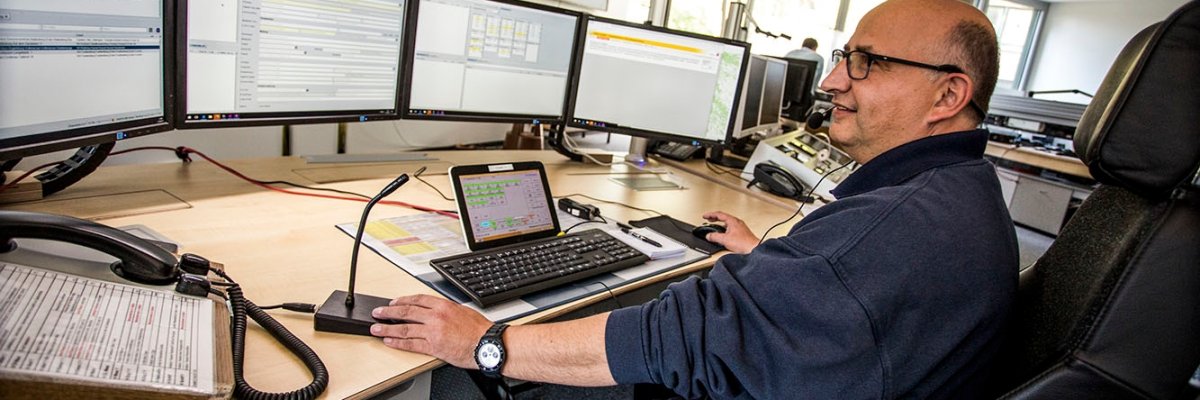Central control station
Central control station
The central control centre for fire protection, rescue services and disaster control receives requests for help from people in all towns and communities in the Waldeck-Frankenberg district.
The possible reporting channels are:
via telephone:
- Emergency number 112 for rescue service, emergency doctor and fire brigade
- Ambulance number 05631 19222
- Administrative lines 05631 505 24 0
via fax:
- for the deaf emergency fax number 112
- Fax machine Administration 05631 505 24 1199
via signalling systems:
- Home emergency call
- the fire alarm system
- via the two radio operating channels
Tasks
Initiation of all necessary measures
This begins with the mere forwarding of information to e.g. the police, motorway police, road maintenance depot, motorway maintenance depot and municipal building yards, if no operational measures are required by the control centre. If, however, emergency measures are necessary, the control centre immediately alerts the fire brigade, the rescue service or other aid organisations such as the German Red Cross, JUH, Promedica, THW, and the emergency medical service. The forces are led to the scene of the incident, a comparison is made with the alert and response regulations and any necessary additional alerts are carried out. Necessary additional alerts are made on the instructions of the local head of operations, general information is obtained for the current operation, information on hazardous materials is provided, beds are found for patients and authorities, organisations and neighbouring control centres are notified. Bringing in special units or equipment or assigning an order number in the rescue service complete this phase.
Documentation
All measures are documented in the mission control computer directly for a mission or in the so-called electronic watch book. In addition, all telephone calls and radio conversations are recorded and archived.
Final reports on the assignments or activity
After the operations on site have been completed and all vehicles are back at the accommodation, the operations processing department carries out extensive follow-up work. This includes, for example, recording additional information on patients, compiling final reports and sending the incident reports to all those involved in the operation. In addition, fire safety deficiencies identified during the operation are reported to the fire prevention department. The district fire inspector receives a report if the alerted fire brigade has not deployed in accordance with the alarm and deployment regulations. The same report is sent to the rescue service department if there are problems with the rescue and emergency medical service.
Deployment preparation
The following activities are carried out in the area of preparatory measures:
- Drawing up the alarm and response regulations (AAO's) according to the specifications of the fire brigade chiefs on the identical forms used throughout the district. Incorporating the AAO into the operations control system.
- Drawing up and checking special alarm plans for specific objects, e.g. old people's homes, hospitals
- Entering and maintaining the addresses and accessibility of all doctors, hospitals with all wards,
special or large objects in the operations control system as well as in the existing alarm plans. - Constant data maintenance in the operations control system as well as the existing printed documents
- Expansion and maintenance of the operations control system by the system administrator
- Planning and processing of rescue service provision in the event of major emergency incidents below the disaster threshold. This involves, for example, the organisational head (OLRD), the chief emergency physician (LNA), the rapid response groups (SEG), the emergency medical services (EMS) and the emergency medical services (EMS).
- Review and procurement of map material such as regional and supra-regional road maps, forest maps, special railway route maps with kilometre indication and similar systems.
Other tasks
This list is not exhaustive, as new tasks are always coming up and need to be tackled.
- Receipt of fault and maintenance messages for the fire alarm system from the company Siemens
- Guided tours through the technology and premises of the control centre
- Trainee training
- Allocation of additional radio channels
- Coordination of long-distance transports
- Support in the preparation of the verification procedure
- Statistics
- Information from superordinate departments
